1
What are diamondback terrapins?
While turtles typically live in fresh or marine waters and tortoises live on dry land, terrapins live in the brackish waters of wetlands and coastal environments.
They are able to deal with the salt in the water because they have salt glands near their eyes that flush out extra salt in their bodies, similar to sea turtles.
Diamondback terrapins, Malaclemys terrapin, is the only species in its genus and belongs to the Emydidae family, which includes 50 species in 10 genera.
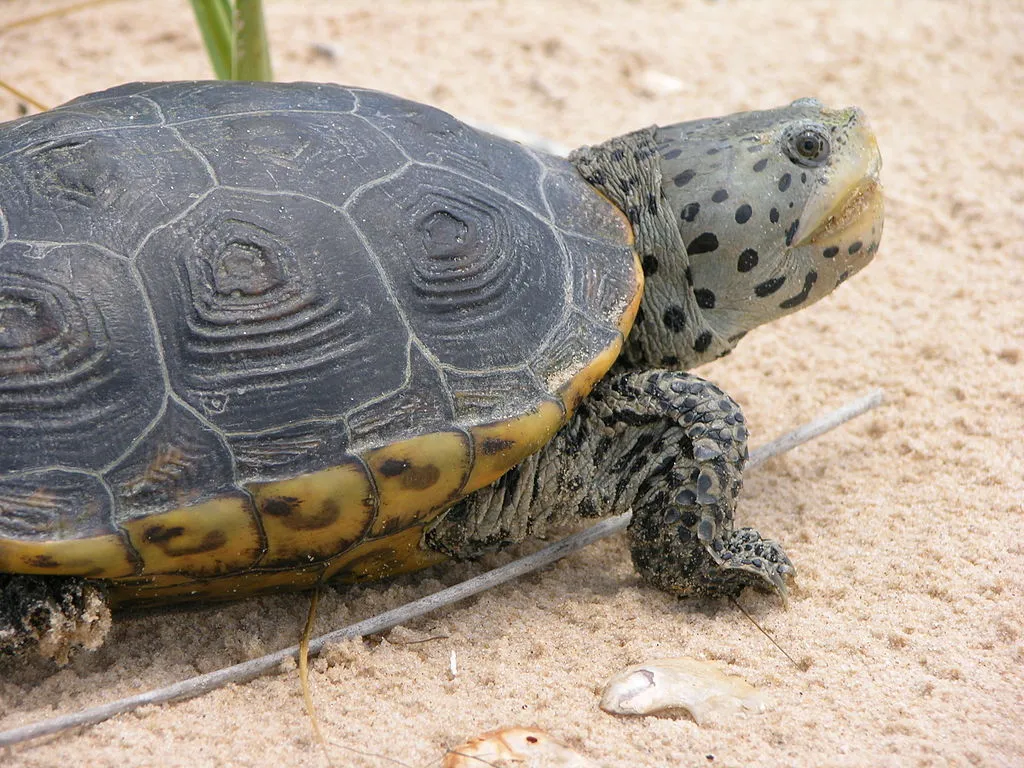
There are 7 subspecies of diamondback terrapins:
- northern, M.t.terrapin
- Carolina, M.t.centrata
- Texas, M.t.littoralis
- ornate, M.t.macrospilota
- Mississippi, M.t.pileata
- mangrove, M.t.rhizophorarum
- Eastern Florida, M.t.tequesta
2
Why are they called diamondbacks?
Diamondbacks get their name from the natural pattern that occurs on the scutes (bony plates) of their shell. They are diamond-shaped and filled with concentric circles (like bullseye) that make this an easy species to identify.
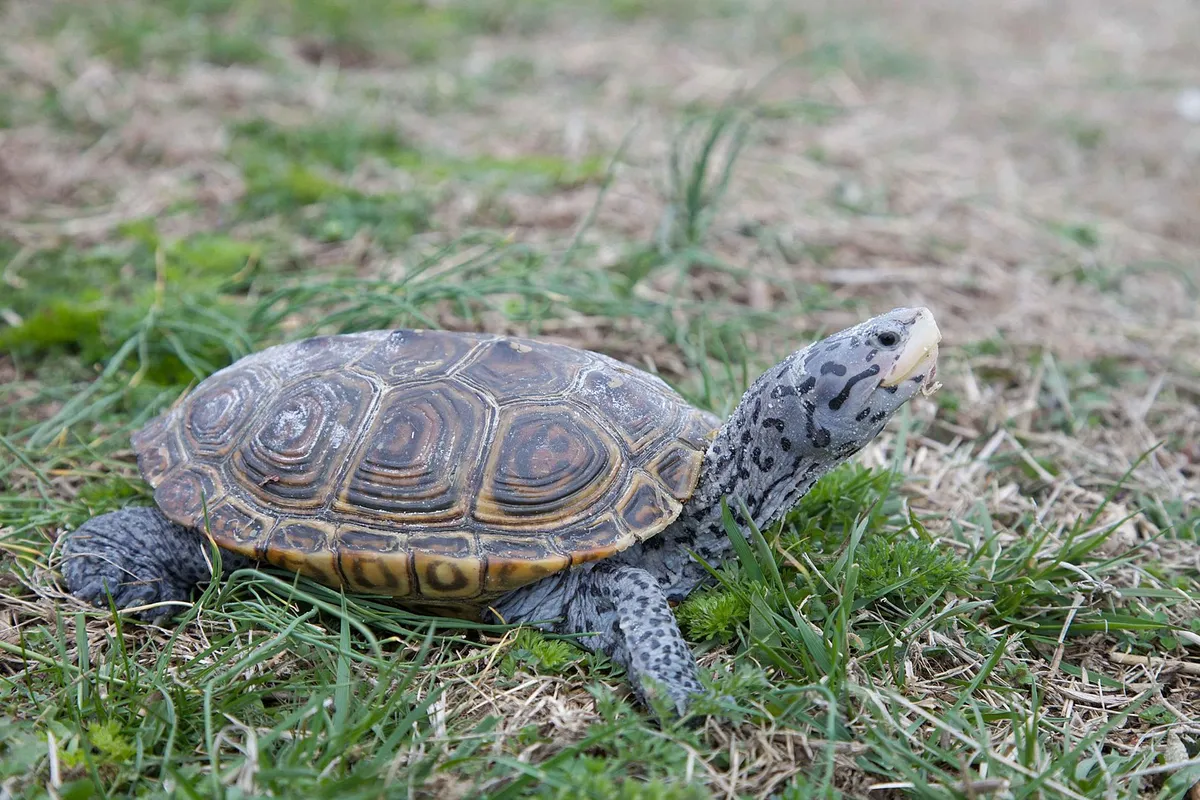
3
How big are diamondback terrapins?
This depends on if you’re looking at a male or a female as diamondback terrapins experience sexual dimorphism. Female diamondbacks grow much larger than males, measuring around 19cm in length across their carapace (top shell). The males are slightly smaller at around 13cm.
4
Where do diamondback terrapins live?
As one of the few turtles that can tolerate brackish water, you can find these reptiles in a variety of coastal habitats along the eastern seaboard and Gulf of Mexico of the United States.
Diamondback terrapins have been observed living in salt marshes, wetlands, mangrove swamps, estuaries, lagoons and tidal creeks.
Wherever they live, though, they must have some access to freshwater for drinking. During the winter, they bury themselves in the mud and hibernate until spring.
5
What do diamondback terrapins eat?
Diamondback terrapins will munch down on molluscs, crustaceans, fish, carrion and invertebrates. They use their strong, bony jaws to crush the shells of their prey.
6
How long do diamondback terrapins live?
While not the most long-lived species of turtle, these terrapins usually live for 25 to 40 years in the wild. It’s not easy to reach old age, as they have to avoid disease, competition, human activity and predation. Only about 1-2% of hatchlings are believed to make it to adulthood.
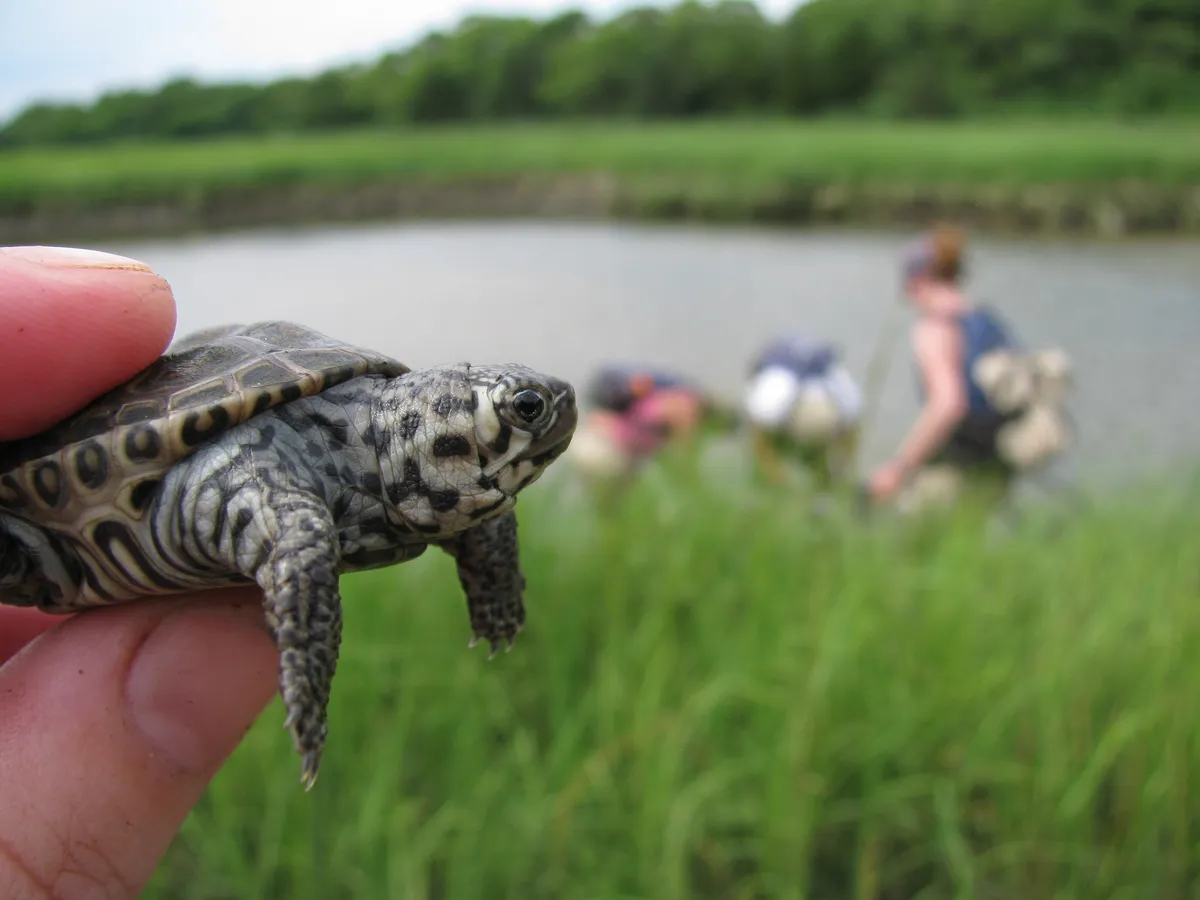
7
Are diamondback terrapins Endangered?
Diamondback terrapins are listed on the IUCN Red List as Vulnerable (last assessed in 2018). This is defined as “facing a high risk of extinction in the wild in the immediate future”.
They are threatened by development and destruction of their coastal habitats, pollution and commercial harvesting. They were once the main ingredient in turtle soup, which was popular in the late 19th and early 20th centuries.
Many states in the U.S. have their own designations for the status of their population and whether these reptiles can be harvested.
Diamondback terrapins are still harvested for trade and consumption, particularly for Asia and Asian communities in the USA.
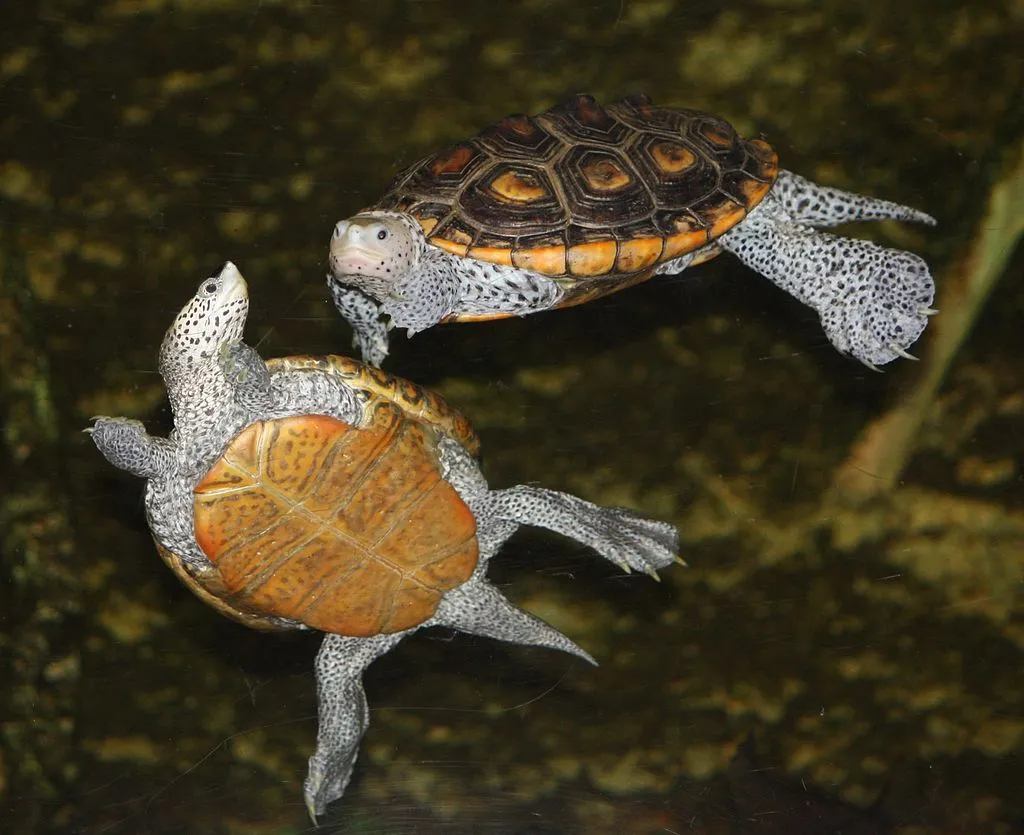
8
How can diamondback terrapins be helped?
Organisations such as Wetlands Institute, Zoo Atlanta and the Georgia Sea Turtle Center are currently working to conserve these amazing animals. Many of these non-profits study the life history of these terrapins, collect eggs to help more of them hatch, and rehabilitate injured individuals.
The public can also help by not polluting their habitats and cleaning, not disturbing nesting sites and watching for terrapins in the road (if you’re lucky enough to live near them).
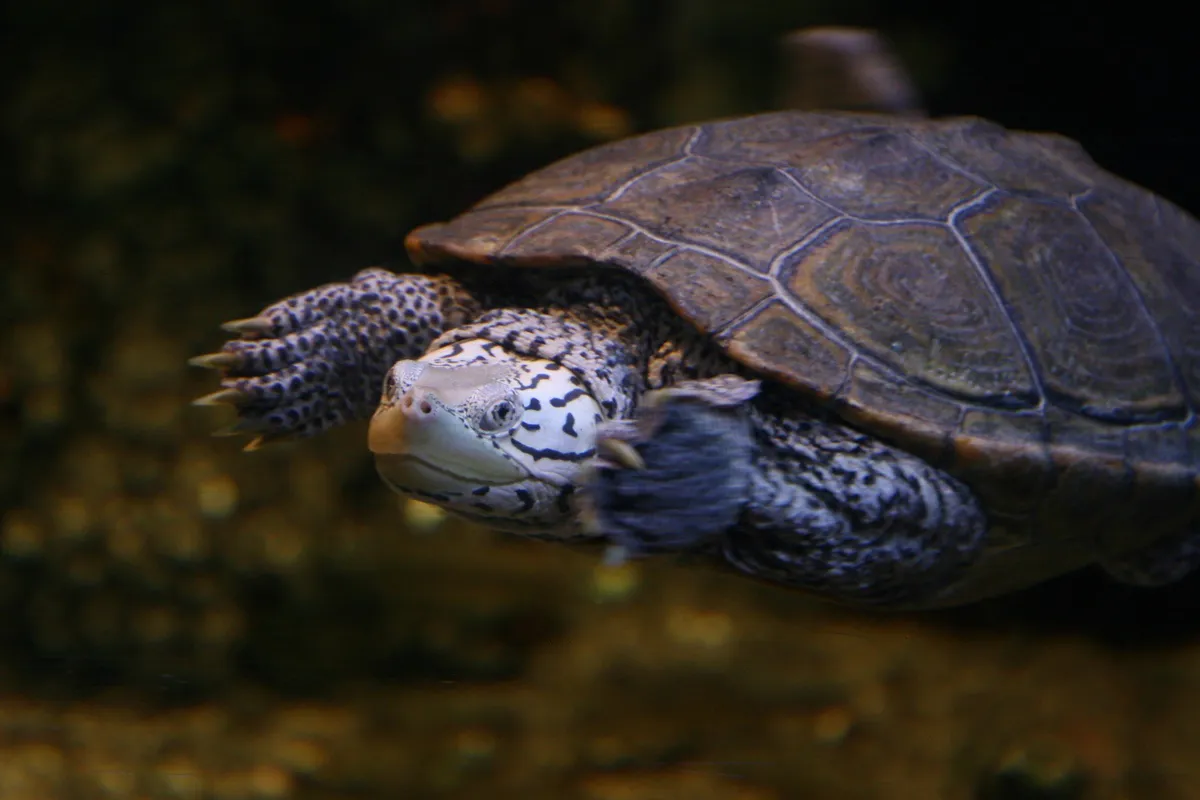
Main image: Diamondback terrapin. © USD/Jenny Mastanuono via Wikimedia
